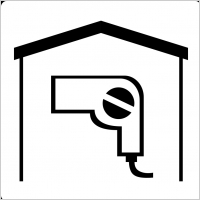wikipedia entry
Monterosso al Mare (Monterosso in ligure, IPA /munte'rus:you /) is a common italianodi 1.521 inhabitants of the province of La Spezia in Liguria. Is the westernmost of the so-called Cinque Terre.
Physical Geography
Monterosso is located in the center of a small natural gulf, protected by a small artificial reef, to the east of Punta Roca in La Spezia Riviera.
Ad nord the original borgo, beyond the hill of the Capuchins, is the village of Fegina, natural expansion and characterized by a relatively modern tourist resort facility compared to the old town.
Fegina can be reached through a tunnel of a few tens of meters. A Fegina is located journey to theCentral station and the beaches are relatively larger, compared to the narrow cliffs that characterize the other villages of the Cinque Terre.
Geographically Monterosso is bordered to the north by the municipalities of Levanto and Pinion, to the south is wet from the Ligurian Sea, Levanto and to the west by the east with Pinion and Vernazza. Is about 34 kilometers west of La Spezia and 90 kilometers east of Genoa.
The municipality is part of the totally of the Cinque Terre National Park and the sea around the coast falls within the protected marine Cinque Terre.
Story
According to historical sources, the first human settlement – called Albareto – arose in the immediate area of the highlands town of Monterosso. The village, in which were found some pre-Roman burials of the Ligurian, was in 643 daiLongobardi destroyed by the hand of the king Rothari.
Following the Battle of the year 1016, the danger of the Saracen invasions began to diminish and establishment a migration from the hills to the sea with the founding of the first villages along the coast. Is dated to the ninth century the primitive village of Monterosso – built at the mouth of the river Buranco – which was, probably, the ultimate limit of the possessions Obertenghi in the area of Masco.
The town was named for the first time in a document, dated 1056, in which Guido Obertenghi, son of Adalbert II, made some donations on site Monte Russo. In the eleventh century, with the disintegration of the brand obertenga, possessions on the feud passed to the Counts Fieschi – from the twelfth century – to the local lords of Lagneto, the latter in contrast to the same accounts fliscani and the Malaspina.
In the thirteenth century saw the territory of Monterosso, as well as the entire area of the Cinque Terre, which land clashes between the Republic of Genoa and Pisa for the lordship of the political and commercial traffic of this important stretch of eastern Liguria. He returned soon in the political orbit of Genoa, the village was in the Levantine 1241 occupied by Pisa that only in 1254 I returned it to the Genoese. Established relationships and alliances with the capital of Liguria Monterosso was elected to the title of Podesta. It is in this historical period that the area experienced a remarkable agricultural development – with the intensification of cultivation of wheat in the first campaign and the cultivation of the vine along the caratteristiciterrazzamenti (bands) near the coast – and maritime activity; in this regard in the seventeenth century is marked a renowned tuna in the waters off Punta Masco.
Indelible mark of the past, and the ongoing struggles, are testimony to the castle, with its circle of elongated includes three round towers, the Aurora tower overlooking the sea and a medieval tower in town, located in front of the parish church of St. John the Baptist.
The oldest part of town is collected below the castle, in the stream is Buranco. Later the town developed on the other side of the creek and on the creek, bounded on the east and west from the tip of the reef crowns the tower Aurora.
With the French domination from the fall of Napoleon Bonaparte 2 December nelDipartimento Vara, as capital, in the Ligurian Republic annexed alPrimo French Empire. From 28 aprile del 1798 with the new French law, Monterosso will fall within the territory of the Canton, capital Levanto, the Jurisdiction of Masco and 1803 The main center of the canton of Levanto in the Jurisdiction of the Gulf of Venus. From 13 June 1805 to the 1814 will be placed in the Department of the Apennines.
In 1815 will be incorporated in the Kingdom of Sardinia, according to the decisions of the Congress of Vienna 1814, and later in the Kingdom of Italy from 1861. From 1859 to the 1927 the territory was included in the sixth district of Levanto Levante part of the Environment of the Province of Genoa and first, with the establishment in 1923, of the Province of La Spezia then.
From 1973 to the 31 December 2008 he was a member of the Montana coast of La Spezia, it was terminated by the Regional Law n ° 24 of 4 July 2008 and in force since 1 January 2009.
The 25 October 2011 a violent disturbance hit the eastern Liguria (bassa e media choices di Vara, Magra Valley and Cinque Terre) and the Lunigiana (province of Massa and Carrara) with flooding, damage, dead and missing at various locations in Liguria and Tuscany.
Among the most affected municipalities is also Monterosso (already interested in 1966 by a similar flood) where heavy rainfall has caused several damages to homes and businesses in the historic center (assessed by the Mayor about 37 million) and rail connections with the stations of Levanto (north) eVernazza (south). Damages were also reported in the local parish church of St John the Baptist, where more than two feet of water and mud invaded the premises of the church, the sacristy and the rectory.
Monuments and places of interest
Religious Architecture
- Church of St. John the Baptist in the historical center of Monterosso. The works for the construction of the church began in 1282 and ended in 1307. The plan of the building is a basilica with three naves that widen towards the altar; campanariaè the tower consists of an embattled tower with a quadrangular base dating from the medieval period. Ilportale of the church depicts, in the bezel at the top, a fresco of the Baptism of Christ; slightly splayed portal presents four sets of marble columns.
- Oratory of Santa Maria di Porto Salvo in the historic center of Monterosso. Already oratory of Death and Prayer, is a baroque building with a facade in reruns 1922.
- Oratory of the Holy Cross, in the historical center of Monterosso, of the sixteenth century.
- Capuchin convent and church of San Francesco along the slope of the hill of San Cristoforo, between the centers of Fegina and Monterosso. The site was built between il1619 and 1622. Among the paintings there is a painting attributed by some to the famous Flemish painter Anthony van Dyck (Crucifixion).
- Hermitage of St. Anthony of Masco along the wooded trail to peak at Masco 311 meters above sea level. The building, quoted in 1380 first, was built between the eleventh and the fifteenth century and later abandoned in 1610.
- Hermitage of Santa Maria Maddalena, Magdalene in the locality, inland from Monterosso. The church, of which there are some architectural elements, is mentioned in a document of 1244 with the primary dedication to St. Lawrence of Topsoil; only 1248 will be dedicated to Mary Magdalene. Ancient medieval structure remains visible, the two distinct body of the factory, probably the church and the monastery, and a torrione.
- Shrine of Our Lady of Soviore in the locality above Monterosso, place to the portion of 418 meters above sea level, whose origins date back to periodoromanico.
Civil architectures
- Giant statue of Neptune or. The statue, imposing and impressive structure incemento armed, is leaning against a rock, overlooking a beautiful beach. Built in 1910 Levacher by the sculptor and architect Francesco Arrigo Minerbi, high 14 meters long and weighing 170 tons, depicts Neptune. The statue, Pastine that adorned villa with a large terrace-shaped shell, was damaged by bombing in the Second World War.
- Villa Montale, residence where he spent part of the summer holidays and life ilPremio Nobel Prize for Literature Eugenio Montale.
Military architecture
- Ancient Genoese fortress and castro obertengo. The construction of the castle is a work of late Genovese construction, perhaps created on the site of castrumbuilt during the rule of Obertenghi, the walls of which the longest side is in ruins. You probably will not notice any added back to the eighteenth century; its area is now largely occupied by the municipal cemetery.
- Aurora Tower. The defensive position was built in the sixteenth century by the Republic of Genoa to counter the increasingly frequent Saracen raids by pirates. The building is located on the end of the promontory of the hill of San Cristoforo and, de facto, the center of the village again (Fegina) and the old village (Monterosso).
Natural Areas
- Punta Masco. The mountain that closes the bay in front of Monterosso, right looking at the sea. Nestled in the national park of Cinque Terre, very striking are its cliffs. A beautiful walk around 1:15 a.m. (to Levanto) allows to reach the so-called “Traffic light”: signaling an old abandoned lighthouse where you can enjoy a spectacular view overlooking the sea (beautiful sunset). At about 100 meters you can also visit the ruins of the hermitage of St. Anthony of Masco.
Company
Demographic trends
Population census
Ethnic minorities and foreign
To the 31 December 2010 foreign residents in Monterosso al Mare 95, at 11, 97% of town population. The nationalities are more numerous:
- Philippines: 22
- Ecuador: 22
Culture
Personality linked to Monterosso
- Joseph Gando (1816-1880), poet and dean of the School-Gymnasium in Genoa. Friend diGiosuè Carducci hosted him repeatedly in Monterosso.
- Father John Semeria (1867-1931), Barnabite and religious writer. He devoted his life to orphans, promulgating an idea of evangelizing Church in close relationship with science and culture; is buried in Monterosso.
- Eugenio Montale (1896-1981, poet and Nobel Prize for Literature in 1975. Monterosso welcomed him on vacation for long periods and inspired many of his compositions, in particular in the collection Cuttlebone. Eugenio Montale is dedicated to the waterfront Fegina while his residence is not visited as private residential accommodation.
- Luigi Grillo (1943), political break.
- Emanuele Castrucci (1952), philosopher and essayist, professor at the University of Siena.
- Maurizio Belpietro (1958), journalist and director of Free.
Events
- Patronal Feast of Saint John the Baptist 24 June.
Economy
The local economy is mainly based on tourism and induced activities. What is characteristic terraces cultivated the vine with the production of fine wines as losciachetrà.
There is fishing activity, linked to “step anchovy” pescate with lamp, traditionally the day of St. Peter (29 June), which gives rise to a disalagione activity that has gained the recognition of “Presidio di Slow Food”.
The beauty of Monterosso is a fact that makes this town a place of great importance. However according to the value of this area, come enormous economic interests that often do not coincide with the needs to protect and preserve that beauty. A special case is the attempt to construct 30 villas in the resort Meschi, reported by various local associations and followed by some investigations on some local newspapers, in particular the magazine Information Sustainable.
Infrastructure and transport
Roads
Monterosso al Mare is located along the provincial road 38. The municipality is not directly accessible by highway, Therefore, the toll of Carrodano – Levantosull'Autostrada A12 is the best exit to reach the destination.
Railways
Monterosso al Mare has its own railway station, located in the resort Fegina, on the Tyrrhenian line Pisa-Genoa motorway between Genoa and La Spezia. All trains stop here making regional and interregional, as well as some intercity trains.





















Latest Comments